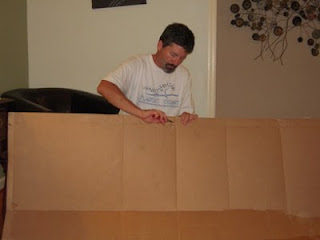Jennifer and I have two very different stories to tell about our trip to the North Atlantic Gyre. Our research took me in one direction and she in another with some overlap.That's what makes us a great team. Jennifer and UNCW's Dr. Pam Seaton worked tirelessly on our open ocean samples.
I worked with various student camps both in the states via Skype and talking to and then demonstrating beach protocols looking for plastics.
I arrived in Bermuda a week in advance so I could survey beaches on Bermuda after last years surveys confirmed that islands inside gyres get pummeled with trash from the continental rim. Like the Hawaiian islands in the North Pacific, one of the most esteemed places on this planet, is riddled with plastic pollution, Bermuda suffers from the same fate. Plastics that are undervalued and over used. Bermuda's geographic location is west of the now known Atlantic garbage accumulation zone publicized by Dr. Marcus Eriksen and Anna Cummings. Sea Education Association (SEA) out of Woods Hole has been doing researchon plastics in the marine environment in the Atlantic for almost 25 years and confirms Eriksen's and Cummings' finding.
They spent six weeks this summer in and around the said accumulation zone in the middle of the North Atlantic extending south and east of Bermuda. "Some areas may contain up to 500,000 pieces of plastic per square kilometer, said scientists from SEA, based in Woods Hole. Such a concentration, the researchers said, would rival that of the Great Pacific Garbage Patch in the Pacific Ocean, whose alarming sighting last year highlighted the extent of oceanic pollution and its potential impact on aquatic life."We had the privilege of touring the brigantine after we returned from our cruise July 18th. Much like what Marcus and Anna found in their winter voyage from the Bahamas to Bermuda and then on to the Azores, we found in our samples. In fact, we hit some of the sample sites they hit in January so as to do seasonal comparisons. It will be interesting to see the results. In the meantime, I'll be uploading videos, pictures and tales from our research so keep checking in.
They spent six weeks this summer in and around the said accumulation zone in the middle of the North Atlantic extending south and east of Bermuda. "Some areas may contain up to 500,000 pieces of plastic per square kilometer, said scientists from SEA, based in Woods Hole. Such a concentration, the researchers said, would rival that of the Great Pacific Garbage Patch in the Pacific Ocean, whose alarming sighting last year highlighted the extent of oceanic pollution and its potential impact on aquatic life."We had the privilege of touring the brigantine after we returned from our cruise July 18th. Much like what Marcus and Anna found in their winter voyage from the Bahamas to Bermuda and then on to the Azores, we found in our samples. In fact, we hit some of the sample sites they hit in January so as to do seasonal comparisons. It will be interesting to see the results. In the meantime, I'll be uploading videos, pictures and tales from our research so keep checking in.







 r beach surveys were cut short due to a looming sky that kept us running for cover most of the day. We planned on doing five surveys today. We didn't get to finish one.
r beach surveys were cut short due to a looming sky that kept us running for cover most of the day. We planned on doing five surveys today. We didn't get to finish one.

